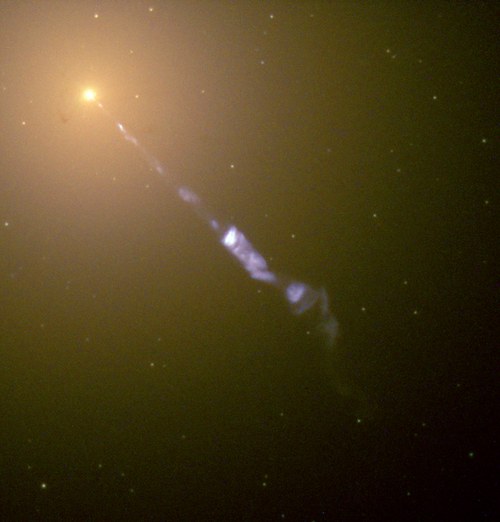
M87 jet, NASA and The Hubble Heritage Team (STScI/AURA) [Public domain]
Active galactic nuclei (AGN) are important astrophysical systems to study the relationships between the properties of the supermassive black hole and those of the galaxies in which they are hosted. We study the AGN population with multi-frequency surveys to understand the properties of this class of sources, from X-ray (e.g. using Chandra, XMM-Newton) to radio (e.g. withJVLA or LOFAR). Follow-up observations in the optical and near-infrared (e.g. with X-Shooter, SINFONI and SOFI data) are used to explore the feedback effects of bright quasars at z ~ 1-3 on the evolution of galaxies. Accretion and ejection mechanisms are studied in the radio, infrared and X-ray (e.g. SUBWAYS project) to understand the complex physics of black holes and the impact on host galaxies from the local Universe up to high redshifts. The impact of AGN on the host galaxy is also studied through the study of galaxies in the local and distant Universe, exploiting the new sub-mm data from the ALMA telescope. This group is involved in several international projects: the eROSITA survey , the Fermi collaboration in the Gamma-Ray band, the Square Kilometer Array (SKA), the Advanced Telescope for High ENergy Astrophysics (ATHENA) and the Cherenkov Telescope Array (CTA).